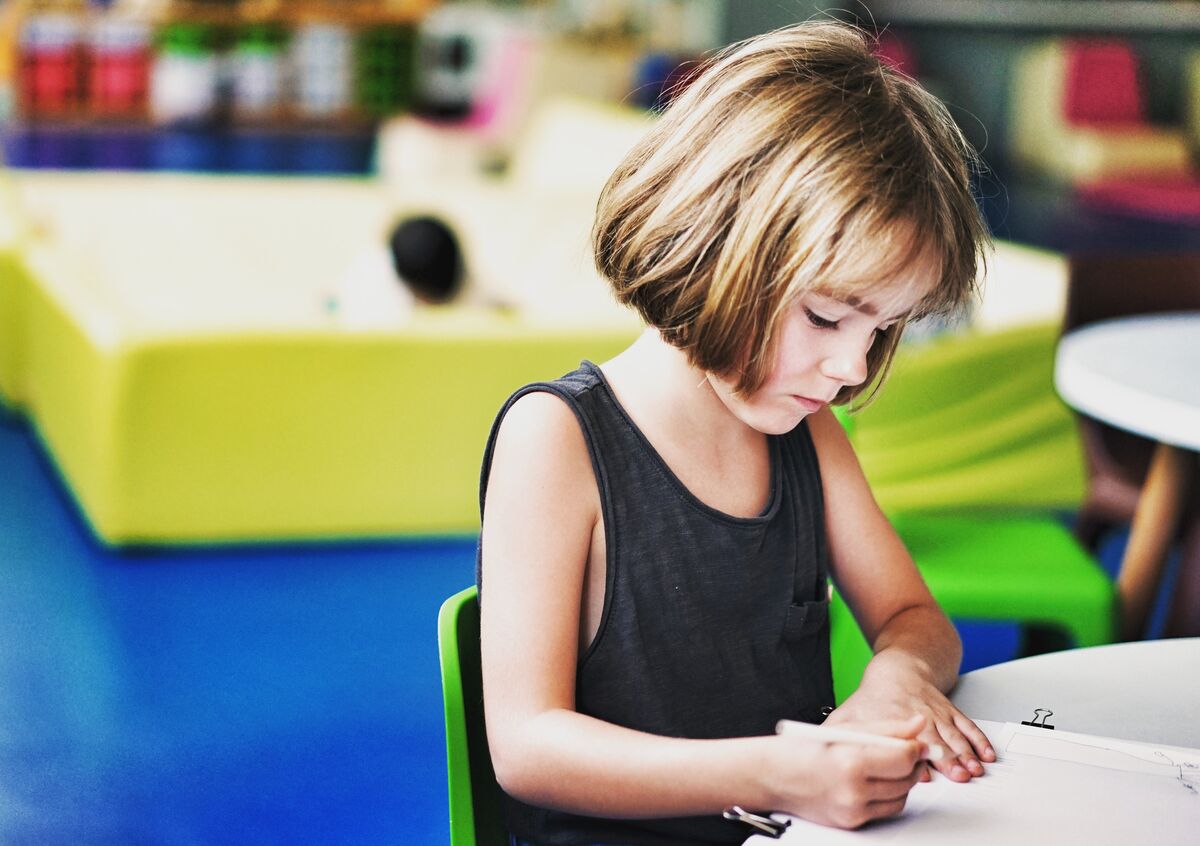Creativity
What You Learned in Kindergarten Can Still Boost Your Creativity

Photo by Pan Xiaozhen.
Kindergarten isn’t often referred to as an invention—let alone an important one.
But when Massachusetts Institute of Technology (MIT) professor Mitchel Resnick was invited to participate in a 1999 conference that reviewed the past millennium’s most significant innovations, he suggested just that.
“Some people argued that the printing press was the most important invention; others argued for the steam engine, the light bulb, or the computer,” he writes in a new book, Lifelong Kindergarten: Cultivating Creativity through Projects, Passion, Peers, and Play (2017). “My nomination for the greatest invention of the previous thousand years? Kindergarten.”
Resnick has spent the better part of his career optimizing how people, and especially children, learn. In particular, his focus as MIT Media Lab’s LEGO Papert Professor of Learning Research has been developing tools that help us think creatively.
In Lifelong Kindergarten, published by MIT Press this summer, he coalesces several decades of research to argue that the hands-on, playful activities used in many kindergarten classrooms not only encourage creative thinking among children, but can—and should—be applied to all levels of education.
Resnick’s thesis hinges on a specific definition of kindergarten: the one invented by German educator Friedrich Froebel in 1837. During Froebel’s time (and often in contemporary education, too), schools adhered to what Resnick describes as the broadcast approach. Teachers stood in front of the class dictating information, which students would transcribe, memorize, and recite. There was little dialogue, discussion, or questioning.
This model didn’t sit well with Froebel, and he realized that it wouldn’t be compatible with the lively, curious brains of young children. When he opened his first school for toddlers in 1837, it eschewed lectures in lieu of interactive learning through building blocks, colored paper, and toys. Froebel named it Kindergarten (in English, “children’s garden”).
Since then, Froebel’s play-based approach to education has spread to schools for children in many countries around the world. But in recent years, Resnick has observed kindergarten curricula moving away from Froebel’s model, favoring phonics flashcards and math worksheets over activities that encourage making. “Some people have referred to today’s kindergartens as literacy boot camps,” Resnick writes.
In his view, this is a troubling trend—which he tries to tackle in Lifelong Kindergarten. Throughout the book, he calls for a return to (and expansion of) Froebel’s original model, which lays the groundwork for a life of creative thinking and problem solving.
“When [children] build a tower with blocks, they learn about structure and stability.…When they create pictures with finger paint, they learn how colors mix together,” Resnick explained on a recent MIT Press podcast. “But most important, is that they’re learning about the creative process—how to start with an idea and turn it into a project. How to imagine something new, play with the idea, share it with others, and keep refining it based on those experiences.”
Resnick drives his point home with a hypothetical situation, set in a kindergarten classroom: One day, a few kids are playing together and imagine a fantasy city. They decide to use their blocks to build it. One child adds houses; another, roads with cars. Inevitably, something goes wrong. A tower reaches its height limit and topples. But that experience inspires new ideas—it sparks a new iteration of the city.
This cycle of making, collaborating, and iterating has served as a springboard for how Resnick describes the creative process. He and his colleagues call it the creative learning spiral: an ever-repeating loop of imagining, creating, playing, sharing, reflecting, and imagining. Rinse and repeat. New ideas are generated over and over.
Of course, it’s not only five-year-olds who can benefit from this process. MIT has applied it to its classrooms, too. “In our work here at the MIT media lab, we’re constantly going through that spiral,” Resnick explained. “As we develop new technologies, we’re spiraling over and over…to make a prototype, try it out, iterate it to make some improvements.”
Resnick believes that this type of creative, hands-on learning is especially applicable today, when technological innovation is transforming our lives at a breakneck pace. “For people to flourish in this rapidly changing landscape, the ability to think and act creatively is more important than ever before,” he writes. He supports this point with professor Cathy N. Davidson’s findings from her book Now You See It, where she estimates that around two thirds of today’s grade school students will end up in jobs that haven’t been invented yet.
Creative thinking will also be important outside of the workplace moving forward, Resnick proposes.
He writes that it will help people “develop and sustain friendships in an era of ever-changing social networks” and learn “how to participate meaningfully in communities that have ever-shifting needs and boundaries.”
While the MIT Media Lab has adopted interactive, play-based education, Resnick has made it his mission to spread this approach beyond select kindergartens and specific university departments. He hopes to make this type of learning accessible to everyone. A lab he founded, dubbed the Lifelong Kindergarten group, develops “new technologies and activities that, in the spirit of the blocks and finger paint of kindergarten, engage people in creative learning experiences,” according to its mission statement. These include free online programs like Scratch, which allows users to build digital worlds, create stories, and problem solve together.
Today, as many kindergartens begin to adopt a memorization- and test-based approach used in higher levels of education, Resnick proposes a radical alternative: “I think we need exactly the reverse: We need to make the rest of school, in fact like the rest of life, more like kindergarten.”
Alexxa Gotthardt is a Staff Writer at Artsy.



No comments:
Post a Comment